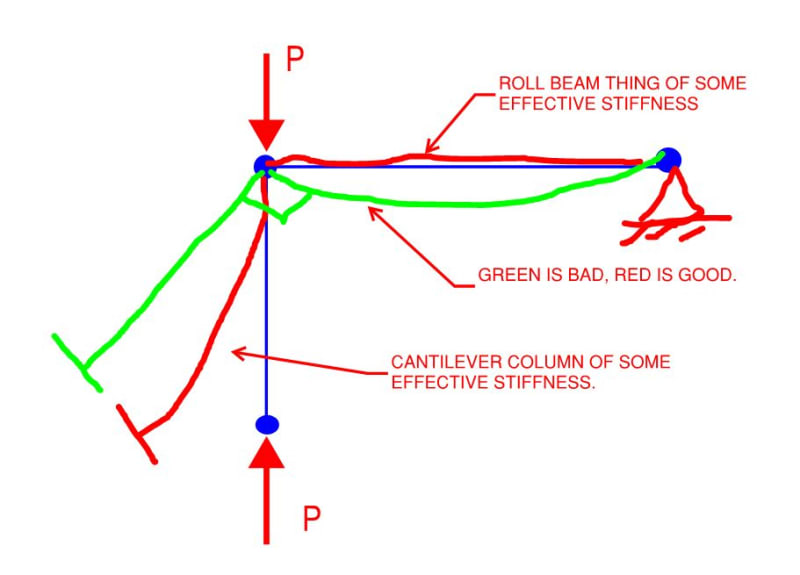MegaStructures
Structural
- Sep 26, 2019
- 376
I am on a stability roll today.
Section J10.4 of the AISC manual deals with web sideway buckling of sections where the compression flange is restrained against rotation and where it is not. The commentary says the case where the compression flange is restrained against rotation is in situations where there is a slab or deck on the top flange, but the manual does not seem to give a definite stiffness requirement for the compression flange "rotational bracing".
The first thought is that the torsional bracing requirements from Appendix 6 would apply, but I believe those are for torsion of the section, not for one flange. Any ideas what the requirement would be to restrain rotation of the compression flange other than the situation having to be completely obvious (e.g. 6" concrete slab)
“The most successful people in life are the ones who ask questions. They’re always learning. They’re always growing. They’re always pushing.” Robert Kiyosaki
Section J10.4 of the AISC manual deals with web sideway buckling of sections where the compression flange is restrained against rotation and where it is not. The commentary says the case where the compression flange is restrained against rotation is in situations where there is a slab or deck on the top flange, but the manual does not seem to give a definite stiffness requirement for the compression flange "rotational bracing".
The first thought is that the torsional bracing requirements from Appendix 6 would apply, but I believe those are for torsion of the section, not for one flange. Any ideas what the requirement would be to restrain rotation of the compression flange other than the situation having to be completely obvious (e.g. 6" concrete slab)
“The most successful people in life are the ones who ask questions. They’re always learning. They’re always growing. They’re always pushing.” Robert Kiyosaki

